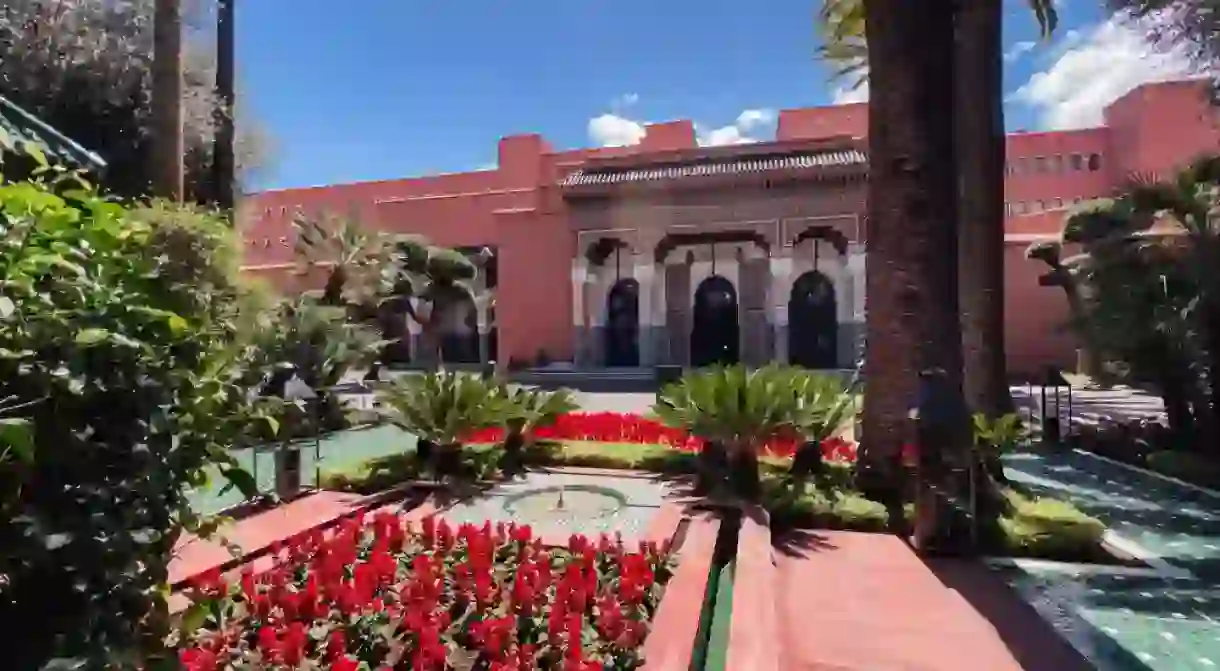A Guide to the Most Beautiful Gardens in Marrakech

Marrakech is home to plenty of lush, perfectly manicured gardens that provide both locals and visitors with a place of respite from the hustle and bustle of the city. Here, we take a look at some of the most beautiful gardens in Marrakech.
La Mamounia
Spa Hotel, Hotel
Nestled behind high walls, these sprawling gardens may just be the highlight of La Mamounia, Marrakech’s finest old hotel. Soaring palm trees, low lying cactus, jacaranda trees and even olive trees fill the surroundings. If staying at La Mamounia, it’s worth spending extra for a garden view. For travellers staying off-site, drinks at the Italian restaurant under the soaring palms, or coffee at the pavilion where orange and citrus trees are perfectly aligned, provide a great opportunity to witness these iconic gardens. The gardens are open daily unless there is a private event at the hotel, not uncommon during high season in Marrakech.
Anima
Botanical Garden

Located 27km (17mi) from Marrakech and accessible via a free shuttle bus, Anima Gardens has long aspired to be ranked among the most beautiful and imaginative gardens in the world. Designed by André Heller, the 2ha (5 acres) garden acts as an art gallery featuring painting and photography exhibitions as well as one-of-a-kind installations from around the world.
Parc El Harti Gardens
Park, Botanical Garden
Stepping into the Harti Gardens in the centre of Gueliz, it’s hard to believe that you are just steps from one of the most bustling plazas of Marrakech. Children run free, men and women wander freely while gardeners maintain palm and citrus trees.
Jardin Majorelle
Museum, Botanical Garden

Nectarome
Park, Botanical Garden
Located about 30 minutes from Marrakech, a visit to Nectarome Gardens provides a rich sensory experience. Upon arrival, guests are invited to enjoy a tisane (herbal tea) under a pergola. Choose from a range of teas including those to help with sleep patterns and even digestive problems). Post tea, wander through the aromatic gardens filled with rosemary, lavender and verbena, the Atlas Mountains hovering in the background. Herbs including sage, thyme, marjoram and citronella are distilled on-site for their range of beauty products including body washes, soaps and lotions.
Le Jardin Secret
Museum, Botanical Garden

Privately owned, Le Jardin Secret on Rue Mouassine in the heart of the Marrakech medina is a fine example of Islamic gardens and their cultural importance. Standing on the rooftop terrace or from the watchtower, visitors can witness first-hand the strict geometric rules applied to the quadripartite Islamic gardens. The home was previously occupied by Al-Hajj Muhammad Loukrissi who lived in the residence with his three wives and many children until his death in 1934. Following his death, the building fell into a state of despair until the garden was purchased with renovations beginning in 2008.
Trips and Tours in Morocco
Architectural Landmark, Natural Feature

Planning a visit to Marrakech? This magical city is one of many amazing places to visit in Morocco, so consider extending your Moroccan adventure by booking a spot on one of the many multi-day tours in our extensive Morocco collection.













